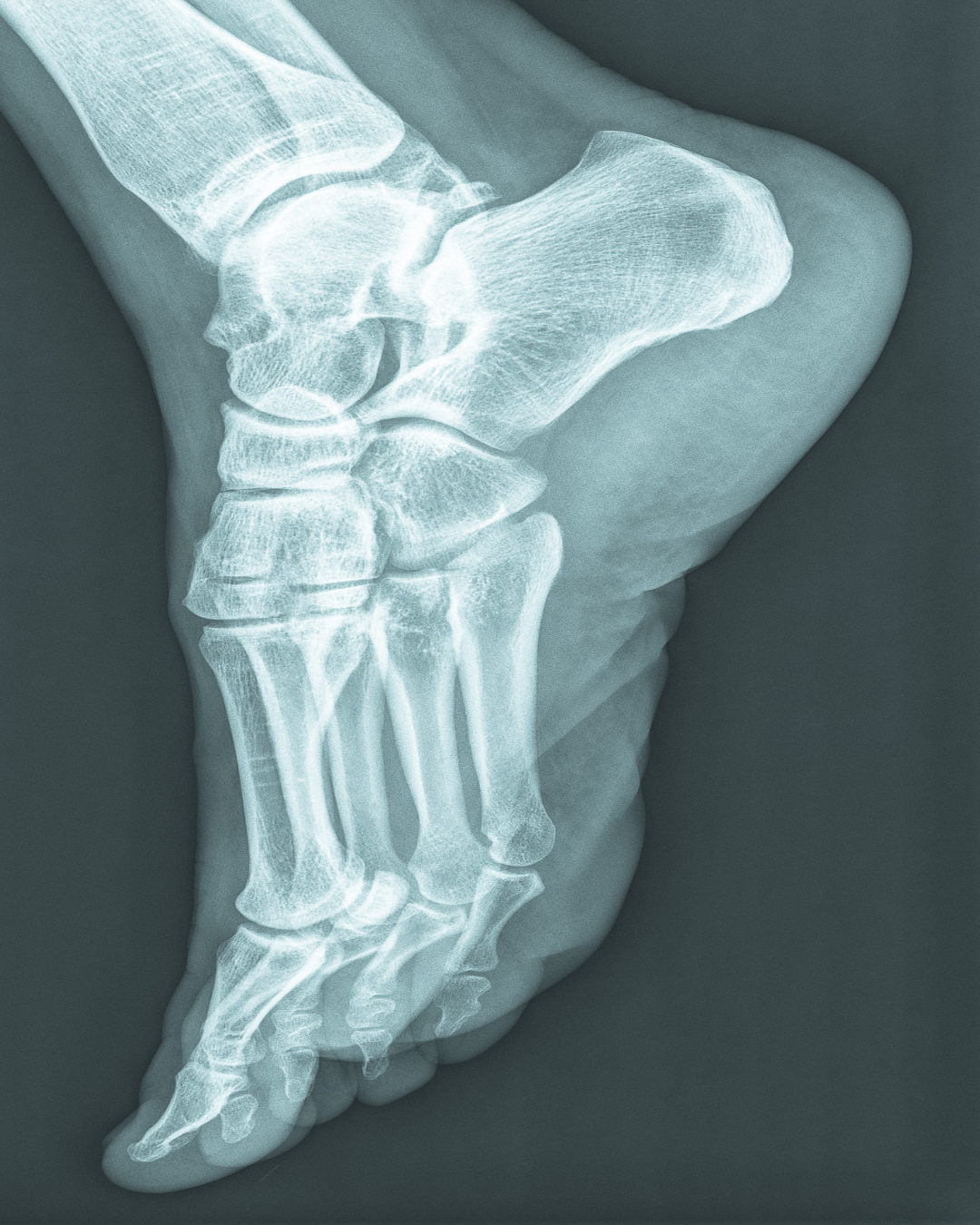Fasciitis Plantaris & Heelspur
Fasciitis Plantaris & Heelspur
These terms seem to be very different, but are closely related to one another. They actually produce similar symptoms in the foot.
This article is about the origin and treatment.




First the anatomy:
The foot contains multiple bones, connected by ligaments, capsules and muscles. Together they form arches, medially and at the front of the foot. A footprint shows a zone where there is no pressure.
The medial arch differs per person: some have ‘a high arch’; others develop throughout life a flat foot. The cause can be genetically, but often the cause is shoes, sport or a (standing) profession.
By continuous overexertion an inflammation can occur at the insertion of the tendon: fasciitis plantaris. This tendon takes care of the medial foot arch.
As with many inflammations, swelling and pain will exist (especially in the morning!), and you will walk differently. This process is reversible, but the cause remains: the falling arch.
It is important to differentiate the condition of the fascia. Often, an inflammation (fasciitis) is confused with a deteriorated quality of the fascia. (tendinopathy). The difference can be made visible with an ultrasound scan.
If the stretch of the fascia is prolonged, an extra piece of bone will develop at the insertion of the heel: the heel spur. This is the end stage of a long process and not easy to fix.
Thus, it is important not to get into that phase.
Shockwave is the state-of-the-art treatment. This is an intense way of treating where the tendon gets hit by a high intensity of kinetic energy (‘sonic boom’). This creates new tissue and destroys nerve endings.
A silicon heel in the shoe avoids pressure at the insertion.
Cortisones and surgery are not to be advised, they give too many side effects.
Best advice: Be on time!
If you notice morning pains or pain after exertion, go to a podologist for insoles, and to a specialized physiotherapist for an ultrasounds scan and shockwave treatment.
Experiencing lower limb pain? Get in touch
I am determined to offer you help.

